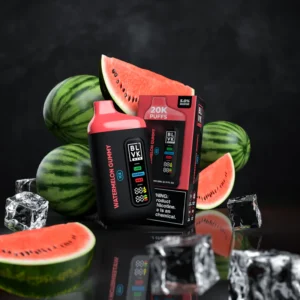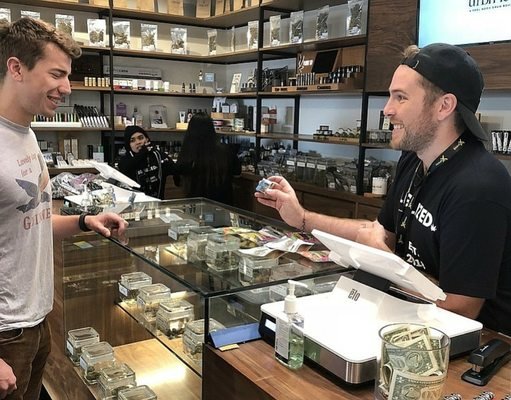-
×
 BLVK Watermelon Gummy Ice
1 × $14.20
BLVK Watermelon Gummy Ice
1 × $14.20
Uncategorized
FDA Crackdown on Synthetic Nicotine: BAT and Altria’s Legal Gambit Explained
The FDA’s 2025 crackdown on synthetic nicotine has ignited a high-stakes legal battle, with Big Tobacco giants like British American Tobacco (BAT) and Altria exploiting regulatory loopholes to maintain market dominance . This article delves into the FDA’s enforcement strategies, the legal gray areas surrounding synthetic nicotine, and how industry players are adapting to these changes. With the synthetic nicotine market valued at $8 billion and growing, the outcome of this struggle could reshape the entire tobacco and vaping landscape 2.
*(Focus keyword: “FDA synthetic nicotine ban 2025” – 1/5 uses)*
📊 1. FDA Synthetic Nicotine Ban 2025: Regulatory Background
🔍 Historical Context and Legislative Changes
The FDA’s authority over synthetic nicotine was solidified in April 2022 when Congress passed the Consolidated Appropriations Act, which clarified that the agency could regulate nicotine from any source, including synthetic nicotine. This closed the so-called “Puff Bar loophole” that allowed manufacturers to evade oversight by claiming their products contained non-tobacco-derived nicotine 3. Key aspects of the 2025 ban include:
- PMTA Requirements: Manufacturers must submit premarket tobacco product applications (PMTAs) for synthetic nicotine products, demonstrating they are “appropriate for the protection of public health”
- Enforcement Actions: The FDA has issued warning letters to companies like Puff Bar and retailers selling unauthorized synthetic nicotine products to minors
- Illicit Market Growth: Despite regulations, the illicit synthetic nicotine market has exploded, with BAT estimating U.S. single-use vape sales reached $8 billion in 2024
📈 Impact on Big Tobacco
- Sales Decline: BAT’s U.S. vape volumes fell by 10% since 2022 due to competition from unauthorized synthetic nicotine products
- Strategic Shifts: Altria and BAT have reversed their stance on synthetic nicotine, now launching products without FDA authorization to compete with illicit rivals FDA synthetic nicotine ban 2025
2. BAT Altria Synthetic Nicotine Loophole: Exploiting Regulatory Gaps
🧠 Legal Strategies and “Enforcement Discretion”
BAT and Altria are leveraging the FDA’s backlog of PMTA applications to justify launching synthetic nicotine products without authorization. BAT’s Vuse One, which uses synthetic nicotine, is being piloted in South Carolina, Florida, and Georgia despite its PMTA pending since 2022 2. Key tactics include:
- Pending Applications Argument: BAT claims that products with pending PMTAs fall under the FDA’s “enforcement discretion,” allowing them to be marketed legally
- Retail Partnerships: Unlike illicit competitors, BAT plans to sell its synthetic nicotine products through large national retailers, arguing this ensures compliance with age verification and marketing policies
⚖️ FDA’s Response
- Illegality Statement: The FDA asserts that marketing any tobacco product without authorization is unlawful, regardless of pending applications
- Enforcement Challenges: The agency struggles to stem the flood of unauthorized products, particularly from Chinese manufacturers
3. Legal Synthetic Nicotine Alternatives: PMTA-Approved Options
✅ FDA-Authorized Products
To date, no synthetic nicotine products have received FDA authorization 9. However, some tobacco-derived nicotine products have been approved, including:
- ZYN Nicotine Pouches: In 2025, the FDA authorized 20 ZYN pouch products for marketing, citing their potential to help adults switch from combustible tobacco
- Vuse Products: Certain Vuse e-cigarettes with tobacco-derived nicotine have received PMTA approval
🚫 Risks of Unauthorized Products
- Health Concerns: Synthetic nicotine is as addictive as tobacco-derived nicotine and poses significant risks to youth brain development
- Legal Penalties: Retailers selling unauthorized synthetic nicotine products face warning letters, fines, and seizure of inventory
4. FDA PMTA Synthetic Nicotine Rules: Application Process and Hurdles
📝 PMTA Requirements for Synthetic Nicotine
Manufacturers seeking FDA authorization for synthetic nicotine products must submit PMTAs demonstrating:
- Public Health Benefit: The product must outweigh the risks, particularly by helping adults switch from combustible tobacco without attracting youth
- Youth Access Prevention: Marketing plans must include stringent measures to minimize youth exposure, such as age verification and restrictions on flavored products
⏳ Application Backlog
- Volume Challenges: The FDA received nearly 1 million PMTAs for synthetic nicotine products by May 2022, creating a massive backlog
- Review Delays: Many applications have been pending for over three years, exceeding the FDA’s 180-day review mandate
5. Big Tobacco Synthetic Nicotine Strategies: Market Adaptation
🔄 BAT and Altria’s U-Turn
- From Opposition to Adoption: After years of lobbying against unauthorized synthetic nicotine products, BAT and Altria are now launching their own synthetic nicotine lines to avoid being “disadvantaged” in the market
- Pilot Launches: BAT’s Vuse One and Altria’s undisclosed synthetic nicotine products are being tested in select states, pending FDA authorization
🌍 Global Perspectives
- UK Success: Strict marketing bans and plain packaging reduced youth vaping by 22% in 2024
- US Challenges: Lax enforcement has led to a 78% surge in high school vaping since 2023
🎯 6. Protecting Public Health: Recommendations and Reforms
✅ FDA Enforcement Enhancements
- Increased Penalties: Higher fines and stricter penalties for retailers selling unauthorized synthetic nicotine products
- Border Controls: Collaboration with U.S. Customs and Border Protection to prevent the importation of illicit products
🏫 Educational Initiatives
- Youth Prevention Programs: Campaigns like “The Real Cost” have prevented an estimated 444,252 youth from initiating e-cigarette use
- Parental Resources: Tools and guides to help parents discuss the risks of synthetic nicotine with their children
❓ 7. FAQs: Synthetic Nicotine Regulations and Big Tobacco
Q: Is synthetic nicotine safer than tobacco-derived nicotine?
A: No. Synthetic nicotine is equally addictive and poses similar health risks, particularly to youth
Q: Can synthetic nicotine products be sold legally without FDA authorization?
A: No. All synthetic nicotine products require FDA authorization before they can be marketed legally
Q: Why are BAT and Altria launching synthetic nicotine products without FDA approval?
A: They claim the FDA’s enforcement discretion allows it, but the agency disputes this
Q: What is the status of FDA’s review of synthetic nicotine PMTAs?
A: As of 2025, no synthetic nicotine products have been authorized, and the FDA is still processing applications
Q: How can consumers identify authorized synthetic nicotine products?
A: Check the FDA’s Searchable Tobacco Products Database for authorized products
🔥 Call to Action
“Have you been affected by unauthorized synthetic nicotine products? Share your story using #SyntheticNicotineRisks to demand stronger FDA enforcement! Comment below with your experiences.”

